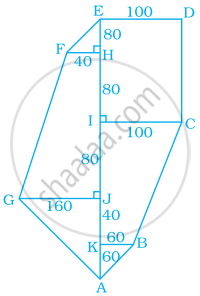Advertisements
Advertisements
प्रश्न
☐ PQRS is an isosceles trapezium l(PQ) = 7 cm. seg PM ⊥ seg SR, l(SM) = 3 cm, Distance between two parallel sides is 4 cm, find the area of ☐ PQRS.
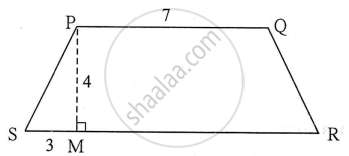
उत्तर

Draw a perpendicular from Q to line MR. Where it meets the line MR, name it point N.
MN = PQ = 7 cm
In ΔPMS,
PM² + SM² = PS²
⇒ 4² + 3² = PS²
⇒ PS² = 16 + 9
⇒ PS² = 25
⇒ PS = 5cm
PQRS is an isosceles trapezium so, PS = QR = 5 cm
PM = QN = 4 cm
So, NR = SM = 3 cm
SR = SM + MN + NR
= 3 + 7 + 3
= 13 cm
Area of trapezium PQRS = `1/2 xx` (sum of parallel sides) × height
=`1/2 xx (7 + 13) xx 4`
= 40 cm²
संबंधित प्रश्न
Top surface of a raised platform is in the shape of a regular octagon as shown in the figure. Find the area of the octagonal surface.
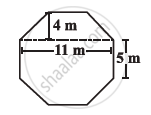
Find the area of trapezium with base 15 cm and height 8 cm, if the side parallel to the given base is 9 cm long.
Find the area of Fig. as the sum of the areas of two trapezium and a rectangle.

Mohan wants to buy a trapezium shaped field. Its side along the river is parallel and twice the side along the road. If the area of this field is 10500 m2 and the perpendicular distance between the two parallel sides is 100 m, find the length of the side along the river.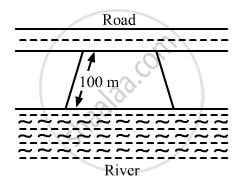
The area of a trapezium is 1586 cm2 and the distance between the parallel sides is 26 cm. If one of the parallel sides is 38 cm, find the other.
Find the area of the field shown in Fig. 20.39 by dividing it into a square, a rectangle and a trapezium.
Find the area of the pentagon shown in fig. 20.48, if AD = 10 cm, AG = 8 cm, AH = 6 cm, AF = 5 cm, BF = 5 cm, CG = 7 cm and EH = 3 cm.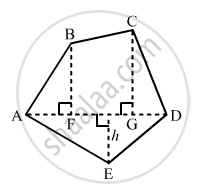
Find the missing values.
| Height 'h' | Parallel side 'a` | Parallel side 'b` | Area |
| 13 cm | 28 cm | 492 sq.cm |
Arivu has a land ABCD with the measurements given in the figure. If a portion ABED is used for cultivation (where E is the mid-point of DC), find the cultivated area.

Find the area of the following fields. All dimensions are in metres.
